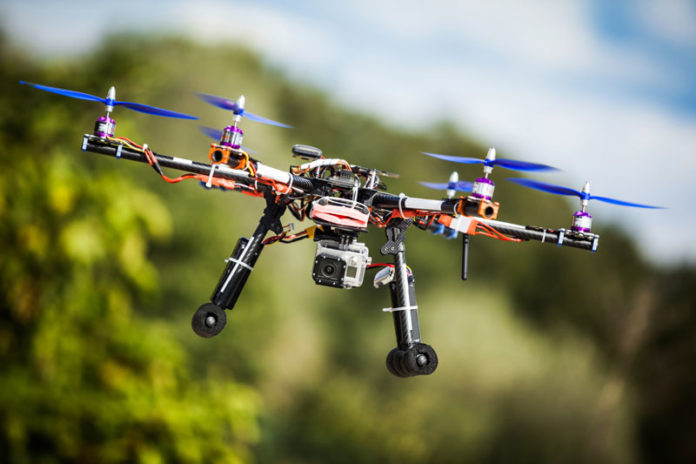In a scene that audiences would likely reject as too corny for a movie, a drone dropped a package of drugs into a prison yard last week. To the surprise of exactly zero observers, the illicit airmail touched off a massive fight in the prison yard.
The Mansfield Correctional Facility, about 65 miles from Cleveland in Mansfield, Ohio, received its unexpected cache of forbidden fruits on July 29, in the prison exercise yard. The Mansfield News Journal reports that the package contained 144.5 grams of tobacco, 65.4 grams of marijuana and 6.6 grams of heroin.
Nine inmates were nearby when the special delivery touched down, and immediately started a brawl over rights to the cache of drugs. Their commotion brought the rest of the yard over, and approximately 205 inmates in the yard had to be moved inside. Police used pepper spray to break up the fight, and there were no serious injuries.
The inmates, naturally, were searched, run through sensors, and “clinic checked” to ensure they hadn’t made off with any contraband. The nine brawlers were removed to solitary confinement.
The incident shines a new spotlight on questions about drone use. The flying machines are used by search and rescue teams, police and military personnel, and online retail colossus Amazon intends to use them to ship products in the near future.
Amazon will be behind the drug smugglers in the marketplace, though, as this isn’t even the first attempted shipment at Mansfield. JoEllen Smith, a spokeswoman for the Department of Rehabilitation and Correction, told the Mansfield News Journal “We have had other instances of unmanned aerial systems breaching security. The agency’s top security administrators are taking a broad approach to increase awareness and detection of unmanned aerial systems.”
More recently, privacy concerns have come into play. On Sunday, June 26, a Kentucky man shot a drone he claimed was hovering over his property and his 16-year-old daughter, saying he has a right to protect his privacy. He was arrested on charges of wanton endangerment and criminal mischief.
The FAA currently offers safety “guidelines” for drone flying, as opposed to hard rules. The guidelines include staying above 400 feet of altitude and avoiding people. In the Kentucky incident, the drone owners say they were never below 193 feet of altitude, and the man who shot it claims more like 10 feet.
Drones have also proved to be a public safety hazard. In recent California forest fire-fighting operations, three separate times privately owned drones flying over the area caused firefighters to ground their firefighting aircraft for fear of a deadly incident.
Jorge Ramos, chairman of the San Bernardino County Board of Supervisors, announced $75,000 in rewards for the citizen who identifies the drone operators in this case. A Southern California Assemblyman, Mike Gatto, has also proposed legislation to allow firefighters to simply shoot the drones next time something like that happens.
Like many other technological advances, drones are proving to be tricky to deal with. How do we balance the rights of privacy, and public safety, with general freedoms? Is the solution to allow homeowners to blow drones out of the sky over their property? What about those that interfere with public servants, like in California? Or those that smuggle contraband?
While the temptation is certainly there for lawmakers to slap a band-aid fix over each individual incident, that will simply lead to another byzantine morass of unnavigable statutes that make every behavior the wrong one. A good start might be giving the FAA’s current list of seven suggestions the force of law. The current system of no accountability is demonstrably not working, and as these flying computers become more affordable, more and more people will have them. Just imagine, iDrone 6, flying over a private pool near you.































